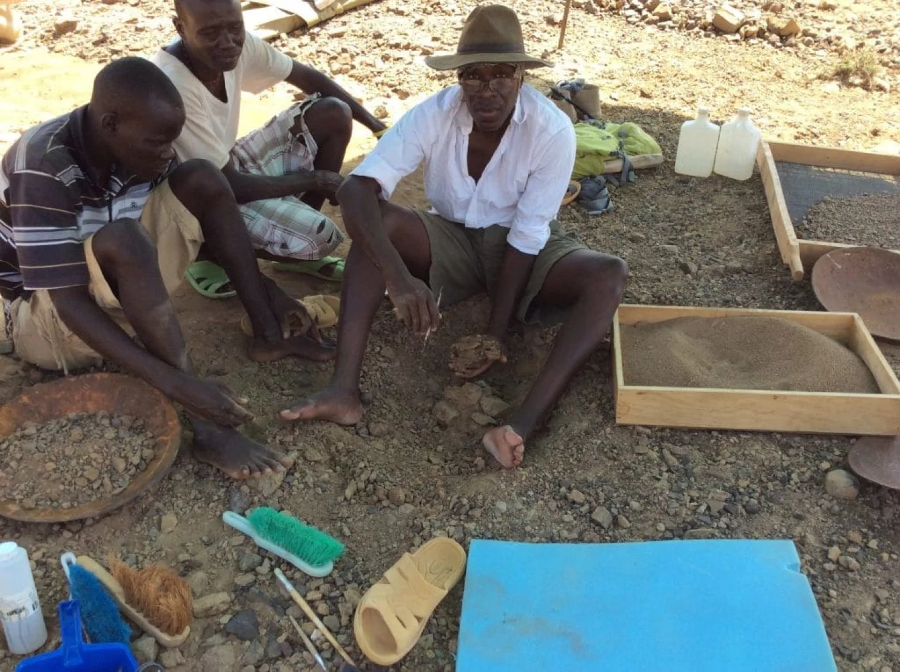A group of researchers found a skull of a baby ape that lived more than 13 million years ago. The skull is shedding light on primate evolution, and a clear look at what our common ancestors looked like.
The skull was found in the Napudet region of the Turkana Basin, Kenya, and was kept almost intact because its body was blanketed in ashfall from a nearby volcanic eruption. The skull was found in September 2014 and scientists have spent more than two years studying it.

A paper detailing their findings was published Wednesday in the journal Nature.
Baby ape that lived more than 13 million years ago was found thanks to a cigarette
The discovery itself is impressive because it almost didn’t happen, as ape fossils are particularly difficult to find.
“We’ve been looking for ape fossils for years – this is the first time we’re getting a skull that’s complete,” said Isaiah Nengo, the anthropologist from De Anza College in California who led the discovery, according to National Geographic.
Nengo knew the Napudet region was a promising dig site for fossils from the Middle Miocene era, about 13 million years ago. However, when he proposed an expedition to the site in 2014, he was told by his colleagues that there was nothing useful to be found there. Nengo, who also teaches at the Stony Brook University-affiliated Turkana Basin Institute, was determined to go. He went to Kenya and gathered a group of 4 local fossil finders.
They dug the site for two weeks in August and found nothing. On September 4, 2014, the team dug more and found nothing, so they decided to head back home. A team member, a Kenyan fossil finder called John Ekusi, began smoking a cigarette while they walked to their car. Nengo told him that he would “kill them with that smoke,” so Ekusi walked further ahead with his cigarette. Then, Nengo noticed that Ekusi had stopped and was looking at something on the ground.
“If you’re a fossil finder, you know that look,” said Nengo, according to The Washington Post. “It’s like an atomic bomb can go off, and you don’t care, you’re so focused at what you’re looking for.”
The group came closer and saw Ekusi had stumbled across the skull of a primate. Nengo recalls they started dancing in excitement.
‘Alesi’ was one year and four months old when it died
The skull is about the size of a lemon and is part of a newly identified species of early apes named Nyanzapithecus Alesi. The skull had been nicknamed “Alesi” after the local Turkana word for “ancestor.” The skull is believed to be the most-complete bone of an extinct ape species in the fossil record. The oldest ape fossils to date are from 6 to 7 million years ago.
A year after the discovery, Nengo obtained government clearance to carry the fossil from Kenya to the European Synchrotron Radiation Facility (ESRF) in Grenoble, France, to perform more tests on Alesi. He said it was one of the most nerve-racking air travel experiences he had ever had, as the specimen sat in his lap all the way until they got to France and he never left his sight.

The ESRF is a facility credited for producing the world’s most intense X-rays. There, scientists scanned the fossil and were able to see what was inside Alesi.
“We were able to reveal the brain cavity, the inner ears and the unerupted adult teeth with their daily record of growth lines,” ESRF scientist Paul Tafforeau said in a statement. “The quality of our images was so good that we could establish from the teeth that the infant was about 1 year and 4 months old when it died.”
Nengo will use Alesi to study babies and their role in evolution
Researchers first thought Alesi had been a gibbon because it had a small snout. But the X-ray scans revealed fully developed bony inner ear tubes, which clarified the skull belonged to an ape. Gibbons are known for their fast and acrobatic behaviors in trees, so the inner ears of Alesi show that it had a more cautious way of moving around.
By analyzing Alesi’s teeth, the researchers were able to identify it as part of a newly discovered species, the Nyanzapithecus Alesi. Until the discovery, scientists weren’t sure if the Nyanzapithecus species were apes or if they had originated in Asia.
However, thanks to Alesi, scientists now know that N. Alesi had been part of a group of primates that roamed Earth more than 10 million years ago. Also, they found the species originated in Africa, not in Asia.
The skull was taken back to Kenya. Nengo noted he plans to continue fieldwork in the region and he expects to use Alesi as “kind of an anchor” for studying babies and their role in the evolution of apes and humans.
Source: The Washington Post
